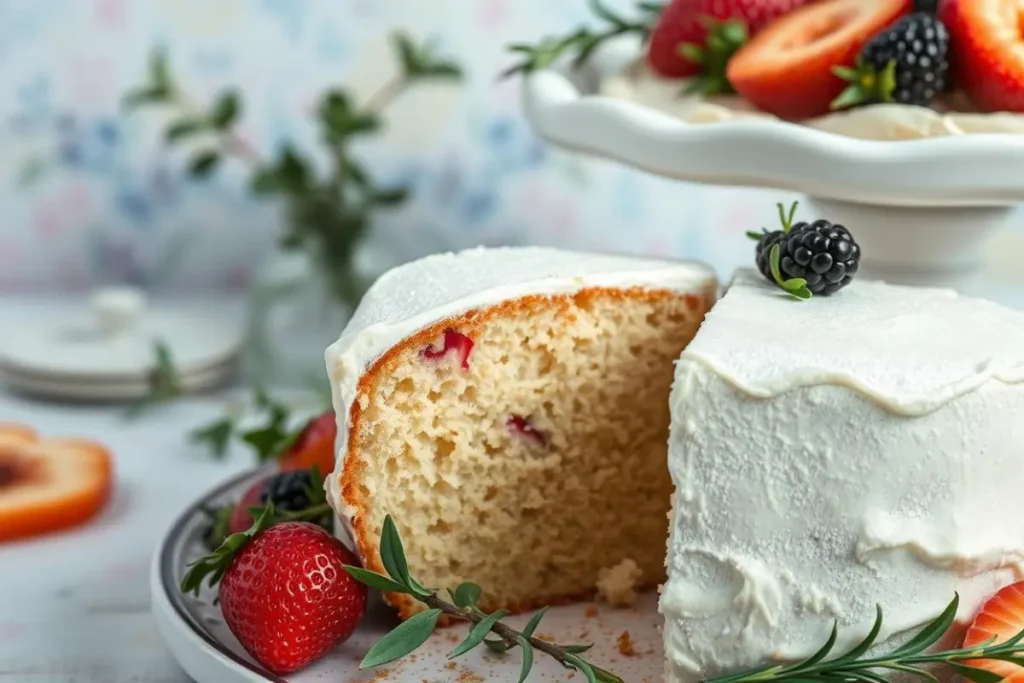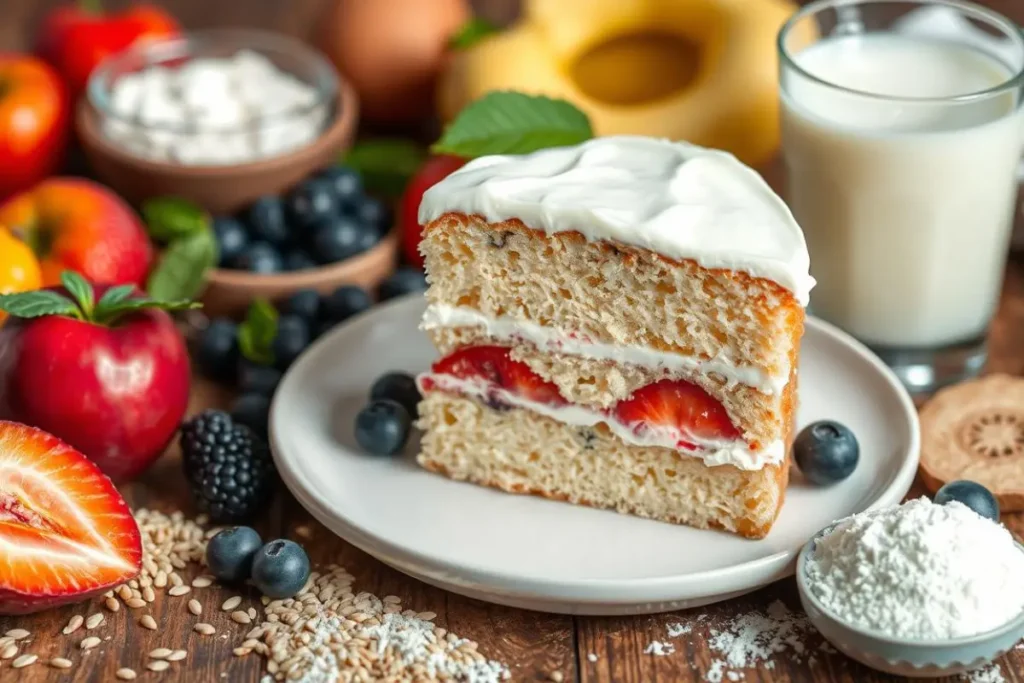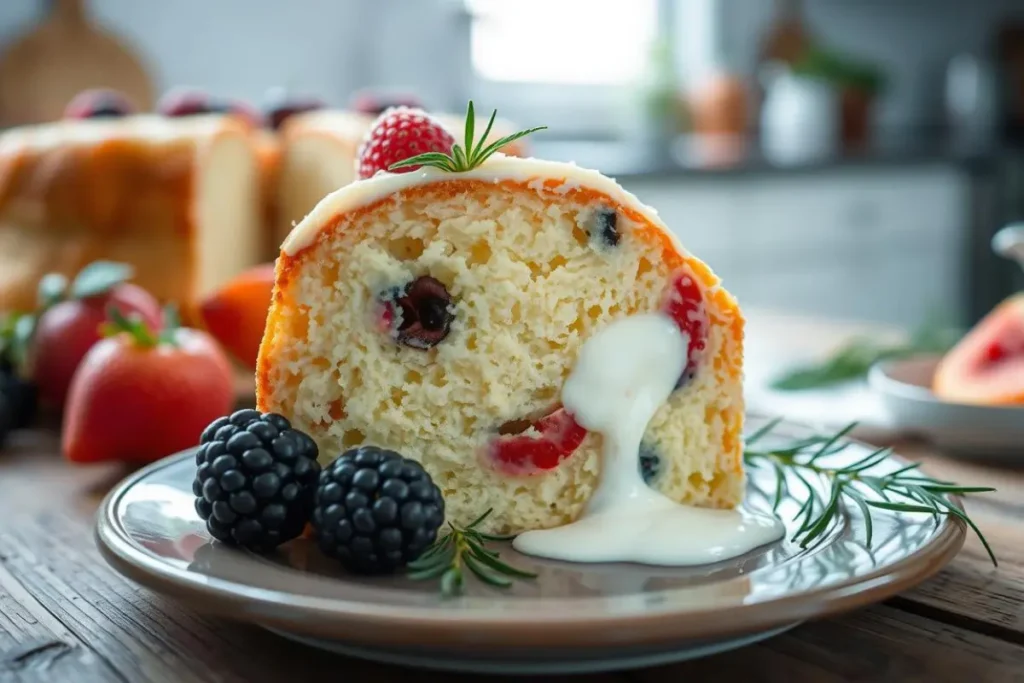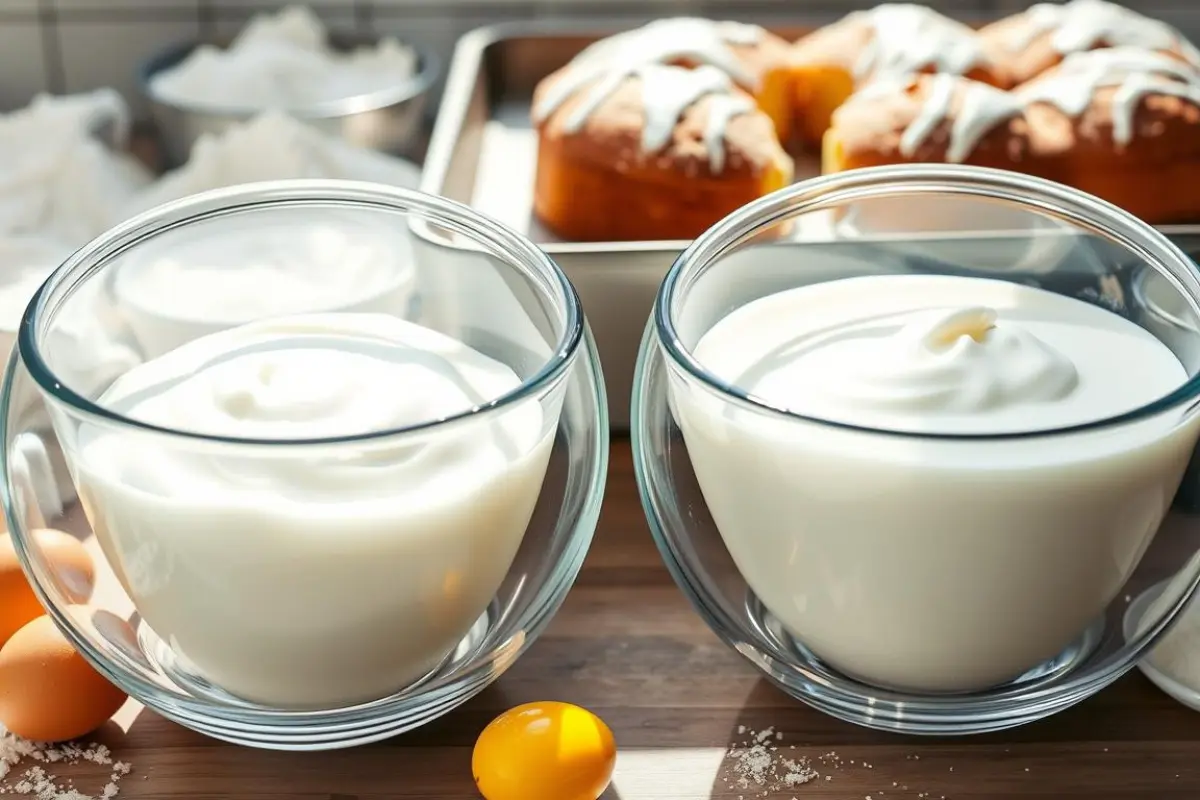Can I use kefir instead of yogurt in cake?” This is a question many bakers are asking, as they explore the versatility of this tangy dairy product. The answer, however, isn’t a straightforward yes or no.
The debate around kefir vs yogurt baking is gaining traction, particularly as people look for alternatives in their cake recipes.
Using kefir in baking can be beneficial, but it’s important to know the basics. The trend of using kefir as a yogurt substitute in cakes is growing. It’s essential to explore the reasons behind this trend.
As we explore kefir vs yogurt baking, it’s important to consider the benefits and challenges. The question of using kefir instead of yogurt in cakes is common. Understanding the implications of this substitution is key. By exploring kefir as a yogurt substitute, we can learn how to use it in baking and create unique cake recipes.
Understanding Kefir and Yogurt: Basic Differences
When thinking about can i use kefir instead of yogurt in baking?, it’s key to know the main differences. Kefir and yogurt have different ingredients, nutrients, and uses in baking. For example, kefir can bring a special taste and feel to cakes. But, is kefir good for cake baking depends on the cake type and what you want to achieve.
Looking at their nutritional values, both kefir and yogurt offer protein and calcium. Yet, kefir often has more probiotics. This can change the cake’s acidity and bacteria, affecting its texture and feel.
Composition and Nutritional Profile
- Kefir: higher probiotic content, more protein, and calcium
- Yogurt: higher lactose content, more calories, and varying levels of probiotics
Acidity Levels and Bacterial Content
Kefir is usually more acidic than yogurt, which can alter the cake’s acidity. The bacteria in kefir also add to the cake’s flavor. This might change how the cake rises and feels.

Texture and Consistency Comparison
Kefir and yogurt have different textures. Kefir is thinner and easier to pour, while yogurt is thicker and creamier. This difference can make kefir in cake recipes a good choice for a lighter, softer cake.
The Science Behind Using Kefir in Baking
When you think about can kefir be used in baking?, it’s important to know the science. Kefir, a fermented milk product, has a special mix of bacteria and yeast. This mix can change the texture and taste of baked goods. Baking with kefir instead of yogurt can make your baked goods better, thanks to kefir’s acidity and bacteria.
Kefir’s acidity is key in baking. It affects how it works with ingredients like baking soda and baking powder. This acidity helps make the baked goods tender and moist. For the best results, balance kefir’s acidity with sugar and flour.
Here are some benefits of using kefir in baking:
- Enhanced texture and flavor
- Increased nutritional value due to kefir’s probiotic properties
- Improved browning and crust formation

Understanding the science of kefir in baking lets you use its full power. You can make delicious, unique, and healthy baked goods. Whether you’re experienced or new, trying kefir can improve your baking and make something special.
| Ingredient | Effect on Baked Goods |
|---|---|
| Kefir | Enhances texture, flavor, and nutritional value |
| Yogurt | Contributes to moisture, tenderness, and acidity |
| Baking Soda | Reacts with acidity to produce carbon dioxide and leavening |
Can I Use Kefir Instead of Yogurt in Cake?
Many bakers look for yogurt substitutes in cake recipes. Kefir, a fermented milk product, is a good choice. It has a similar consistency and tangy flavor. If you’re thinking, what can i replace yogurt with in cake recipe?, kefir is a great option. To substitute kefir for yogurt cake, you need to know the right ratios and how it changes the cake’s texture and taste.
You can replace yogurt with kefir in a 1:1 ratio. But, kefir is thinner than yogurt, so you might need to adjust the liquid in the recipe. Using kefir in cake recipes can give your cake a unique flavor and texture. It’s important to balance the ingredients for the best results.

- Start with a small batch to test the flavor and texture
- Adjust the liquid content and leavening agents as needed
- Consider adding extra flavorings, such as vanilla or lemon, to balance out the taste
By following these tips and experimenting with different recipes, you can successfullysubstitute kefir for yogurt cake. This way, you can make delicious and unique desserts.
| Ingredient | Yogurt | Kefir |
|---|---|---|
| Consistency | Thick and creamy | Thin and liquidy |
| Flavor | Tangy and sour | Tangy and slightly sweet |
| Substitution ratio | 1:1 | 1:1 (adjust liquid content as needed) |
Benefits of Using Kefir in Cake Recipes
Many bakers wonder about the benefits of using kefir instead of yogurt in baking. Kefir can make cakes more tender and moist. It has a protein that strengthens the cake’s structure.
Compared to kefir vs yogurt baking, kefir has more protein and beneficial bacteria. This makes kefir a good choice for healthier cakes. It also supports digestive health, making it a kefir good for cake baking option.
Some benefits of using kefir in cakes include:
- Improved texture and flavor
- Higher protein content
- Probiotic benefits
- Potential health benefits
Using kefir in cakes can make them delicious and nutritious. Its unique properties and health benefits make it a great choice for baking.
Potential Challenges When Baking with Kefir
Using kefir instead of yogurt or sour cream in baking can be tricky. It might make your baked goods taste tangy and feel moist but dense. To fix this, try mixing kefir with other ingredients like flour and sugar until you get the right feel.
Kefir’s acidity can also change the pH of your mix. This might affect how your dough rises and how it feels. Temperature considerations are key too. Kefir can be sensitive to heat, so you might need to adjust how long it proofs or the oven temperature.
Common Issues and Solutions
- Inconsistent texture: adjust ingredient ratios and mixing times
- Acidity level: monitor pH and adjust leavening agents as needed
- Temperature sensitivity: adjust proofing times and oven temperatures
So, can I substitute kefir for sour cream in baking? Yes, you can, but it changes the taste and texture. Kefir adds a unique sour taste and a moist feel. It’s great in recipes like kefir yogurt swap cake.
Storage Requirements
To get the best results with kefir in baking, store it right. Keep it in the fridge at a temperature under 40°F (4°C). This slows down fermentation and keeps it from spoiling. By knowing these tips, you can use kefir in your recipes and enjoy its health benefits.
| Ingredient | Substitution Ratio | Notes |
|---|---|---|
| Kefir | 1:1 with sour cream or yogurt | Adjust according to recipe and desired texture |
| Flour | Adjust ratio based on kefir’s moisture content | May require additional flour to balance texture |
Expert Tips for Successful Kefir Cake Baking
Expert bakers say using top-notch kefir is key for great results. Kefir in cake recipes brings a special taste and texture. But, it’s important to pick a kefir that’s fresh and has the right balance of acidity and bacteria. Many ask is kefir good for cake baking? The answer is yes, if you use it right.
Here are some expert tips for baking with kefir:
- Use kefir instead of yogurt or buttermilk for moist and tender cakes
- Adjust the liquid in the recipe for kefir’s thickness
- Add a pinch of salt to balance kefir’s flavor
Baking with kefir instead of yogurt adds a new twist to cakes. With practice and trying different things, you can get amazing results. Whether you’re experienced or new, adding kefir to your recipes can be fun and rewarding.
| Tip | Description |
|---|---|
| Choose the right kefir | Select a kefir that is fresh and has a good balance of acidity and bacterial content |
| Adjust the liquid content | Adjust the amount of liquid in the recipe to account for the thickness of the kefir |
| Add a pinch of salt | Add a pinch of salt to balance out the flavor of the kefir |
Adjusting Recipes When Using Kefir
When you swap kefir for yogurt in baking, you need to think about the acidity and bacteria. This is key when you ask can i use kefir instead of yogurt in baking? The answer depends on the recipe and what you want to achieve. Kefir’s special qualities can change the cake’s texture and taste, so it’s important to tweak recipes.
In kefir vs yogurt baking, kefir’s acidity can make cakes denser or flatter. To fix this, you might need to change the leavening agents. For example, using natural yeast or less baking powder can help get the right texture.
Also, kefir’s natural sugars can make cakes sweeter. If you’re substituting kefir for yogurt cake recipes, you should adjust the sugar. You might cut down on added sugar or use different sweeteners to get the flavor right.
To get the best results, you should also tweak the liquid amounts in kefir. Its higher water content can make cakes moist but can also change the structure. By adjusting the liquid and possibly adding more flour, you can get a better texture.
Some important changes to make when using kefir in baking include:
- Modifying leavening agents to account for kefir’s acidity
- Adapting sugar content to balance the flavor
- Adjusting liquid ratios to achieve the desired texture
By understanding these factors and making the right changes, bakers can make delicious cakes with kefir. These cakes will show off the benefits of using kefir in baking.
Best Types of Cakes for Kefir Substitution
Wondering what can i replace yogurt with in cake recipe? Kefir is a top choice for some cakes. It brings a special flavor and soft texture. This makes it perfect for moist and tender cakes.
Pound cakes, coffee cakes, and muffins work well with kefir. They have more fat, which balances kefir’s acidity. Remember, kefir’s acidity level matters. So, is kefir good for cake baking? Yes, but it depends on the cake type and recipe.
Here are some tips for using kefir in cake recipes:
- Start by substituting a small amount of yogurt with kefir and adjust to taste.
- Choose recipes that have a higher fat content to balance out the acidity of the kefir.
- Consider adding an extra leavening agent to help the cake rise.
In conclusion, kefir is a great yogurt substitute in cakes. But, pick the right cake and adjust the recipe. Follow these tips and try different recipes to make delicious, unique cakes with kefir.
| Cake Type | Kefir Substitution Ratio | Notes |
|---|---|---|
| Pound Cake | 1:1 | Reduce sugar content by 10% |
| Coffee Cake | 3/4:1 | Add extra cinnamon and nutmeg for flavor |
| Muffins | 1/2:1 | Increase liquid content by 5% |
Professional Baker Insights on Kefir Usage
Professional bakers have a lot to say about baking with kefir instead of yogurt. They’ve tried kefir in their recipes and found it works well. They say kefir vs yogurt baking has its ups and downs. Kefir’s unique taste and texture can make cakes even better.
Many bakers have swapped yogurt for kefir in their cakes, and it’s been a hit. When asked can i use kefir instead of yogurt in cake, they say yes, but you need to tweak the recipe a bit. Here’s what they suggest:
- Start by using a little kefir instead of yogurt and adjust to taste.
- Keep an eye on kefir’s acidity and adjust your recipe as needed.
- Try different kefir types, like plain or flavored, to see what works best for you.
Bakers stress the need to know how kefir differs from yogurt. This knowledge helps them make cakes that are both new and tasty. By using kefir, bakers can make cakes that are truly special.
In short, professional bakers offer great advice on using kefir in baking. By understanding the pros and cons of kefir vs yogurt baking and following their tips, home bakers can also make amazing cakes with kefir.
| Benefits of Kefir | Challenges of Kefir |
|---|---|
| Unique flavor profile and texture | Acidity level can affect recipe |
| Can add moisture and tenderness to cakes | May require adjustments to recipe |
| Can be used as a substitute for yogurt | May not be suitable for all types of cakes |
Conclusion: Making the Kefir-Yogurt Switch in Your Baking
Using kefir instead of yogurt in cakes can bring many benefits. It can make the texture better and add more flavor. If you want to substitute kefir for sour cream in baking or try a kefir yogurt swap cake, you’ll find it’s a great choice.
You May Also Like:
- Kefir Sheet Cake Recipe: 10 Secrets for Perfect Homemade Cake
- What Does Kefir Do in Baking? 3 Secrets for Fluffy, Moist, Results
- What Does a Chicken Burrito Contain? Ultimate Ingredient Guide
- Why Do Southerners Not Put Sugar in Cornbread? 7 Reasons
- Southern Cornbread Recipe: 7 Secrets for the Best Cornbread
Knowing the differences between kefir and yogurt is key. It helps you adjust recipes right. Kefir’s tangy taste and special microbes can make traditional cakes like pound cakes and muffins even better. So, why not try it and see how it changes your baking?
Frequently Asked Questions
Can I use kefir instead of yogurt in baking?
Yes, you can use kefir as a yogurt substitute in baking. It has a tangy flavor and a thick, creamy texture. This makes it a good choice for many cake and baking recipes.
What are the differences between kefir and yogurt in baking?
Kefir and yogurt differ in acidity and bacterial content. Kefir is more acidic and has a wider range of probiotic bacteria. This can change the texture and flavor of baked goods.
How do I substitute kefir for yogurt in a cake recipe?
To replace yogurt with kefir in a cake recipe, use a 1:1 ratio. You might need to adjust other liquids like milk or water because kefir is thinner. Also, consider the kefir’s acidity and adjust leavening agents as needed.
What type of cakes are best suited for using kefir instead of yogurt?
Kefir works well in dense, moist cakes like pound cakes, sour cream cakes, and coffee cakes. Its tangy flavor and creamy texture enhance these types of cakes.
Are there any other challenges when baking with kefir?
Baking with kefir can present challenges like adjusting recipes for its acidity and thinner consistency. Also, consider temperature and storage. Proper adjustments and handling can help overcome these issues.
Can I substitute kefir for sour cream in baking?
Yes, you can use kefir as a sour cream substitute in baking. Kefir’s tangy flavor and creamy texture make it a good choice for recipes that call for sour cream, such as cakes, cookies, and dips.

